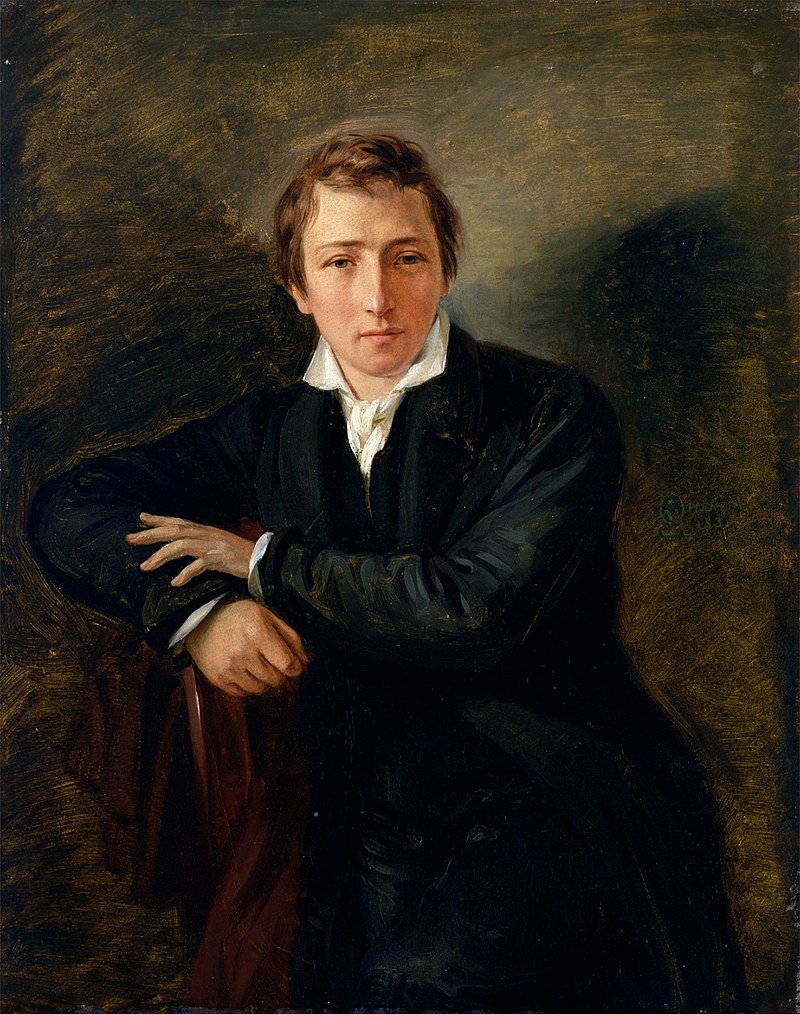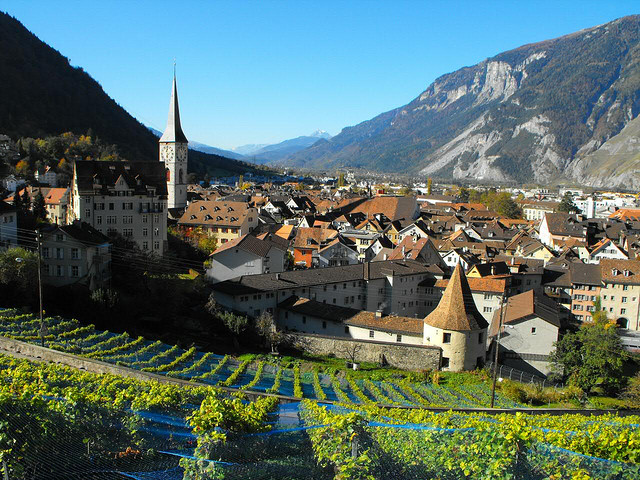Landschlacht, Switzerland, 4 September 2017
It´s not that Switzerland isn´t inspirational.

It is.
It has inspired Anita Brookner’s Hotel du Lac and Albert Cohen’s Her Lover.

Mary Shelley wrote Frankenstein here and Lord Byron The Prisoner of Chillon.


From Julius Caesar to Jean Jacques Rousseau, Sir Arthur Conan Doyle and John Le Carré, Hermann Hesse and Patricia Highsmith – writers have scratched their names on the Swiss literary landscape.
Sherlock Holmes “died” and was “resurrected” here.

H.G. Wells thought he died and Switzerland was Heaven.
Thomas Mann wrote The Magic Mountain here.

Here were Jorge Borges, James Joyce, Erich Maria Remarque, Ernest Hemingway, F. Scott Fitzgerald and Vladimir Nabokov writing their classic works.
Switzerland has seen anarchists, spies and detectives: Sherlock Holmes, Somerset Maugham’s Ashenden, Ian Fleming`s Bond, Le Carré´s spies and double agents.

Friedrich Glauser (“the Swiss Simenon”) and Friedrich Dürrenmatt invented Swiss noir – dark detective fiction.
But much like Switzerland´s travel writers – Ella Maillart, Isabelle Eberhardt, Annemarie Schwarzenbach and Nicholas Bouvier – I often can´t wait to make my escape out of Switzerland to loftier air and warmer climate.
Over the past two decades I have found myself drawn, much like Johann Wolfgang von Goethe from 1786 – 1788, to “slip away” and say that “even I managed to get to Paradise”, that “we are all pilgrims who seek Italy”.

Above: Johann Wolfgang von Goethe (1749 – 1832)
For, like Goethe, I find that Italy is the warm passionate South as opposed to the dark cautious North, a place where the past is still alive, a kaleidoscope of landscapes, colours, manners and monuments seen only in dreams.
Goethe described himself as “the mortal enemy of empty words”.
He needed to fill the names with meaning, “to discover myself in the objects I see”, “to learn to know myself by and through the objects”.
“Some journeys – Goethe´s was one – really are quests.”
(W. H. Auden, Epigraph on Goethe`s Italian Journey)

In the past two decades my wife and I have journeyed to six distinct regions of Italy: Campania, Roma, Alto Adige/Sud Tirol, Sardinia, Toskana, and Lombardia (including Lago Maggiore, Lago di Como, Lago d´Iseo and Lago di Garda).
Six distinct regions, six distinct experiences.
I have had this blog for only two years now and have faithfully recorded my observations on 2015´s visit to Sardinia here (See: Great expectations?; Travelling with the enemy; Jerusalem lost between Europe and Africa; VIPs of Cagliari; The timelessness of Su Casteddu; Criminals or heroes?; The Devil`s Saddle and the Alligator; Why we walk backwards; Under the Skin; Eleonor of Arborea; The Last Castle; The Emperor`s new culture of this blog).
We have recently returned from Lombardia and the Lakes and this journey like the five journeys before (We went to Toskana/Tuscany last year.) has filled with me with inspiration for many blogs to come.
(Tuscany overloaded the senses and the mind but I intend to write about this as well as Campania, Roma, and Alto Adige in future blogs as appropriate, God willing.)
As wonderful an adventure as Sardinia was, what was lacking was a part of the travel experience that flying can´t really provide….the sensory transition from leaving the familiar to get to the unknown.
With an airplane there is no subtlety, no awakening to the new culture, but rather one is ripped from one land and dropped into another.
Italian differences are best cultivated at a natural pace, ideally on foot, but failing this by ground-level horsepower.
So we set out.
Nothing can stop us.
Nothing daunts foreigners.
Nothing frightens them.
Nothing stops them.
We arrive in a steady stream, by all forms of transport and even on foot, by day or night, from the sea or over the Alps.
What is but a small trickle in the winter months grows in the spring to the size of a stream and in summer turns into a monsoon flood, breaking all dykes, covering everything in sight like mindless locusts, only retreating and receding in September, but the flow never completely dries up.
We are part of the swarm of summer, dusty and perspiring.
We are part of the flow of the famous, following consciously or unconsciously in the footsteps of Queen Victoria, Mark Twain and Aldous Huxley, Lord Byron, Richard Wagner and Cole Porter, Percy Shelley and Henry James.

Above: Queen Victoria (1819 – 1901)
It is a peaceful invasion, an eternal pilgrimage, a quest for something beyond our personal borders.
We are fatally drawn to Italy, like flies trapped in amber.
“Simply letting yourself live is beautiful in Italy….
It is sweeter to daydream following the shapes of Italian clouds than under the ash grey dome of a German sky, a workday sky in which even clouds take on the solemn and sulky expression of little burghers and yawn with boredom.
What is, after all, pleasure if not an extraordinarily sweet pain?”

Above: Heinrich Heine (1797 – 1856), German poet
“The charm of Italy is akin to that of being in love.”

Above: Marie-Henri Beyle, aka Stendhal (1783 – 1842), French writer
Henry James suspected that the pleasure of Italy was inseparably tied to the human element, the people who had created the landscape almost with their own hands in the course of many centuries.

Above: Henry James (1843 – 1916), US author
Italy was for him, “the incomparable wrought fusion of human history and moral passion with the elements of earth and air, of colour, composition and form, that constitute her appeal and give it supreme heroic grace.”
William Dean Howells loved “the delightfully natural human beings one could always be sure of in this land of human nature unabashed.”

Above: William Dean Howells (1837 – 1920), US novelist
Italy has mastered the great art of being happy, the only art worth learning but which can never be really mastered, the art of living.
31 July 2017: Landschlacht, Switzerland to Como, Italy (Day 1 of 14)
We drove from our apartment building by the Lake of Constance non-stop to the Splügen Pass on the Swiss-Italian border, via Romanshorn, Chur, Thusis, the Via Mala (the Evil Road) and Zillis.
(All these previously visited places will feature, God willing, in future blog posts.)
The Lake of Constance/Bodensee, that huge East-swimming fish bulge in the course of the Rhine River, 67 km from fish nose to fish fins, does not have the benefit or curse of shoreline mountains, so we get wind in our hair and breezes pushing our boats and often rough and tumble weather.

We are the first to experience the seasons´ changes in Switzerland….the promise of spring, the humidity of summer, the briskness of autumn, the harsh bite of winter.
Landschlacht is part of the community of Münsterlingen with its 16th century Baroque church which watches the Bodensee each winter with keen interest.
Since the 16th century, the Bodensee has frozen solid only half a dozen times.
One winter a church official from Hagnau, on the German bank opposite, walked across the frozen Bodensee to Münsterlingen, saved a statuette of John the Baptist from being destroyed by Protestant Reformers and took it back to Hagnau for safekeeping.
When the Bodensee froze again some years later, he brought it back.
Since then, a freezing of the Bodensee has precipitated a solemn procession to carry the statuette to the opposite shore.
In 1830, villagers delivered it to Hagnau, where it remained until the harsh winter of 1963, when the ice was solid enough to return it to Münsterlingen church.
There it sits still, awaiting the next icy spell.
Ever southward from Romanshorn, where ferries cross to Friedrichshafen, Germany, the road leaves the Lake of Constance near Egnach (See Sunshine Sketches of the Wild, Wild East of this blog.) and takes up the genesis of a southbound autoroute/freeway.
Graubünden, Switzerland´s largest canton, is a folded landscape of deep, isolated valleys, sheer rocky summits and thick pine forests.

It is the wildest and loneliest part of Switzerland, with some of the finest scenery in the Alps.
Here is the birthplace of rivers – the Rhine to the North Sea, the Inn to the Black Sea, and other rivers flowing south to the Po River and the Adriatic Ocean.
This is a trilingual land known as Graubünden in Swiss German, Grigioni in Italian and Grischun in Romansh – Latin´s last gasp as a spoken dialect.
The Autobahn traverses the gentle foothills of Heidiland to bypass the lovely cantonal capital of Chur with its medieval cobblestone alleys and secret courtyards and sensible stocky townhouses all dominated by a huge cathedral.

We leave the Autobahn and enter a wild land – a land of deep, narrow valleys, ancient forests, mountain torrents and villages that have seen little excitement or change since Roman times.
Past Rhäzüns and its isolated chapel of Sogn Gieri/St. George to the town of Thusis loomed over by threatening mountains and mysterious forests, the road, the Evil Road / Via Mala plunges into a narrow ravine, with sheer rock walls rising over 500 metres from the bed of the foaming Hinterrhein River.

Then twisting up and around, up and around, the road climbs and climbs to the 2,113-metre high Splügen Pass.

The Italian border is close now…soon cautious North is abandoned and risky South attempted.
But the Splügen Pass had a lesson to teach…
(To be continued…)
Sources: The Italians, Luigi Barzini / The Gilded Chalet: Off-piste in Literary Switzerland, Padraig Rooney

